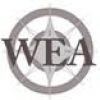City branding and its economic impacts on tourism
Vol. 8, No 1, 2015
|
Jan Herget, Faculty of International Relations University of Economics, Prague Czech Republic E-mail: janherget@hotmail.com |
CITY BRANDING AND ITS ECONOMIC IMPACTS ON TOURISM |
|
Zdenka Petrů, Faculty of International Relations University of Economics, Prague Czech Republic E-mail: petru@vse.cz Josef Abrhám,
Faculty of International Relations University of Economics, Prague Czech Republic E-mail: josef.abrham@vse.cz |
ABSTRACT. Economic competition of cities from the point of view of tourism, trade and investments is becoming very in- tensive as the world economy goes global. Certain cities are attracting all of the assets and the attention, while others are becoming more or less invisible. One of the key prerequisi- ties for the success of cities is their overall image, or so-called „city branding“. The perception of the city affects its attrac- tiveness to tourists, foreign investors or potential students. Marketing experts are trying to brand or re-brand cities in order to create a community where people will want to live and that will be attractive for the visitors. Our paper analyzes different approaches to city branding based on empirical statistical data analysis for assessing the relationship between quality of the city brand and average price of hotels in the city. Our results yielded a positive re- lationship between the value of the cities’ brands and the hotel prices in the cities, although the scope is not as big as in the case of the Saffron barometer. Our findings can be ex- plained by the differing concepts of the used indexes: while CBI is more general and includes economic, education and infrastructure aspects, the Saffron barometer is much more tourism-related.. |
|
Received: December, 2014 1st Revision: January, 2015 Accepted: April, 2015
DOI:10.14254/2071- 789X.2015/8-1/9 |
|
|
JEL Classification: L83, M31, R11 |
Keywords: tourism, city branding, marketing, international trade, regional development, economic growth |













